ARM Introduces Mali T700 GPU Series For Next-Generation Devices
ARM TechCon 2013 kicked off this morning and the theme this year is Where Intelligence Connects. ARM expects roughly 4,000 hardware engineers and software developers to attend the show that is designed to facilitate collaboration by both the hardware and software communities in one event.
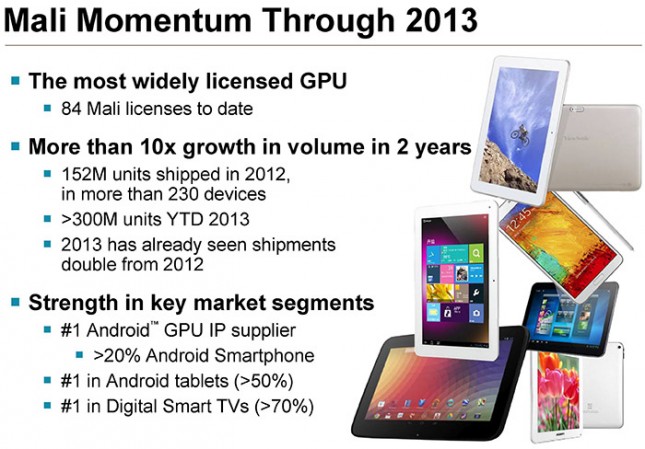
ARM hopes the new parts accelerate its momentum in mobile graphics where it is gaining ground by launching two new Mali GPUs that are designed to power the graphics in the next generation of smartphones and tablet computers. The new GPUs are the ARM Mali-T760 GPU and ARM Mali-T720 GPU. ARM created Mali GPUs to work seamlessly with Cortex CPUs, which means these two new GPUs will be found along side Coretex CPUs. For example the ARM Mali-T760 best complements the Cortex-A15, Cortex-A53 and Cortex-A57 processors, while the ARM Mali T720 goes with the Cortex-A7, Cortex-A12 and Cortex-A53.
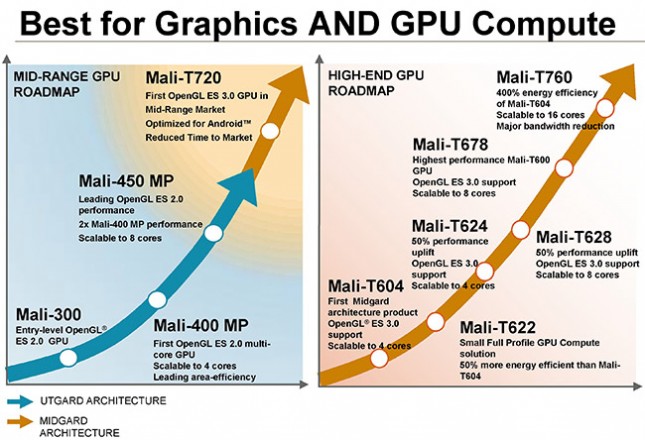
The ARM Mali T760 GPU looks like a beast. The Mali T760 can be scaled up to 16 cores and delivers up to 326 GFlops when fully configured (double what the fully enabled Mali T687 offered). ARM says that they are seeing around a 400% increase in energy efficiency over the ARM Mali-T604 GPU, which was the first GPU to use the midgard architecture. The new mid-range ARM Mali T720 GPU is exciting as it brings OpenGL ES 3.0 to a more affordable price point for the very first time, plus a ton of performance improvements.
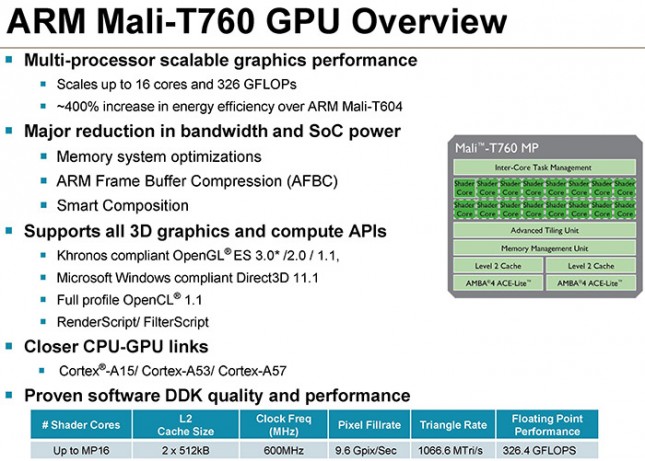
The ARM Mali-T760 FPU specifications look very solid. When scaled all the way up the GPU has 16 shader cores with 1MB L2 cache (2x512kB). With the core clock set to 600MHz this results with a pixel fillrate of 9.6Gpix/sec, triangle rate of 1066.6MTri/s and a floating point performance of 326.4 GFLOPS. ARM didn’t say what the TDP is, but it appears that the Mali-T760 was built with energy efficiency in mind.
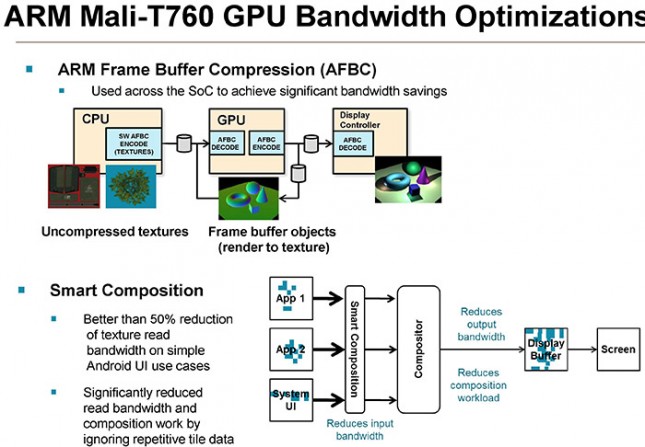
ARM says that an advanced, coherent L2 Cache Interconnect ensures that the ARM Mali-T760 GPU can scale effectively to its full 16 cores, maximizing its performance potential and simplifying the GPUs physical implementation effort. Compatibility with additional power-saving technologies reduces overall System on Chip (SoC) power. For example, ARM Frame Buffer Compression (AFBC) reduces the overall system level bandwidth and power cost of transferring spatially coordinated image data throughout the system by up to 50%. Smart Composition can also reduce texture read bandwidth and SoC power by up to 50%. For Smart Composition to work it needs the right compositor software on Android, so ARM is working with Android to make this happen.
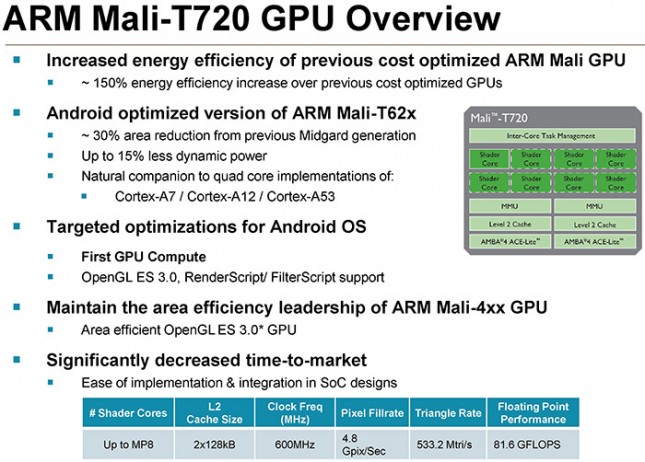
Next up we have the ARM Mali-T720, which is a cost-optimized version of the ARM Mali-T600 family of GPUs designed to bring GPU Compute functionality to low- to mid-range Android smartphones, tablets and DTVs. The ARM Mali-T720 GPU increases energy efficiency by 150% and graphics performance by more than 50% over previous Mali cost-optimized, mid-range graphics processors. ARM says it’s been able to reduce the required silicon area by 30% and dynamic power by 15%. These are both significant reductions and will be of great benefit to smartphone and tablet manufacturers looking for small and low-cost SoC solutions. It should be noted that the Mali-T720 has just a single arithmetic and logic unit (ALU). A fully configured Mali-T720 GPU has 8 shader cores with 256kB L2 cache (2x128kB). With the core clock set to 600MHz this results with a pixel fillrate of 4.8Gpix/sec, triangle rate of 533.2MTri/s and a floating point performance of 81.6 GFLOPS.
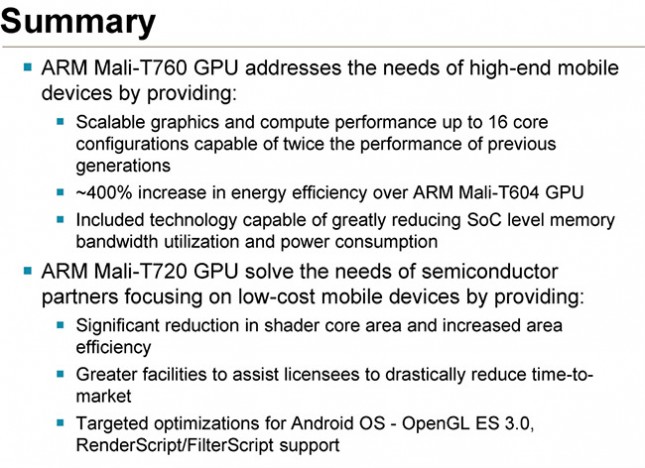
ARM says that Mali GPUs unit shipments have increased by more than 10x over the past two years and they hope the Mali-T760 and Mali-T720 will continue that trend. Both new GPUs also feature decreased time-to-market implementation through better routing and more efficient tool chains. This means that we might be able to see some of these GPUs as soon as the end of 2014!
